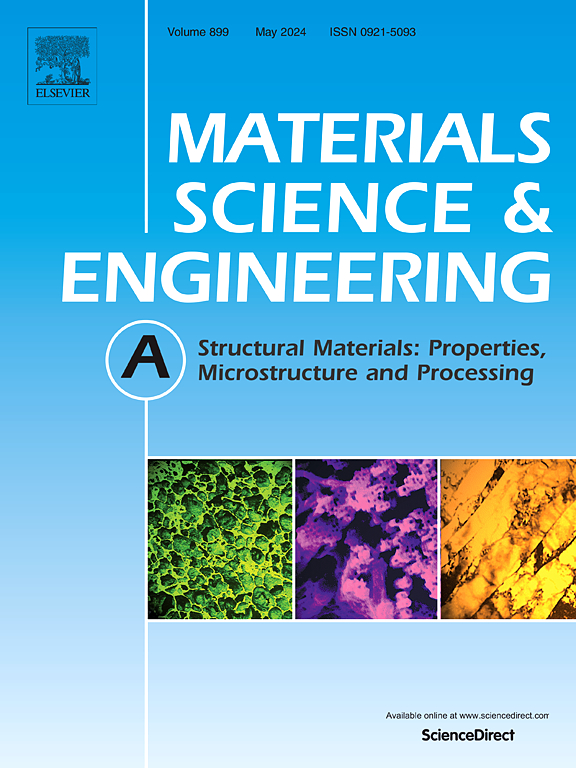The effect of dispersed Ni particles on the microstructure and performance evolution of 3D Ni network reinforced Ag-based contact materials during hot extrusion
IF 7
2区 材料科学
Q1 MATERIALS SCIENCE, MULTIDISCIPLINARY
引用次数: 0
Abstract
A microstructure-controllable Ag-Ni composite in plastic deformation is of great significance to its mechanical and electrical performance. In this study, AgNi sintered ingots reinforced with 10 wt% of a continuous three-dimensional (3D) Ni network and different quantities of dispersed Ni particles were prepared. Subsequently, AgNi composites were obtained by hot extrusion at 800 °C. The 3D Ni network was initially elongated in the axial direction and then fragmented in the radial direction, accompanied by the formation of Ni belts with {110}<111> texture and the development of a Ag/<100> texture. However, at high true strains, the Ni belts were recrystallized into spindle/tadpole shapes. The Ni particles dispersed in Ag-rich matrix improved the elastic modulus of the Ag-rich matrix via the mixing rule, grain refinement, and dislocation pile-up, resulting in enhanced load transfer and cooperative deformation between the Ag-rich matrix and the Ni network. Therefore, the addition of a small quantity (0.5 wt%) of dispersed Ni particles is beneficial for obtaining Ag-based electrical contact materials reinforced with long Ni belts (1200–1800 μm in length and ∼20 μm in thickness), which exhibit a low mass loss (2.02 mg) after 100,000 contacts at 24 V/10 A of direct current.
热挤压过程中分散Ni颗粒对三维Ni网络增强ag基接触材料组织和性能演变的影响
微观结构可控的Ag-Ni复合材料塑性变形对其力学和电学性能具有重要意义。在本研究中,制备了由10%的连续三维(3D) Ni网络和不同数量的分散Ni颗粒增强的AgNi烧结锭。随后,在800℃下进行热挤压,得到AgNi复合材料。三维Ni网络首先在轴向呈伸长状,然后在径向呈破碎状,同时形成了{110}<;111>;Ag/<100>;纹理。然而,在高真应变下,Ni带再结晶成纺锤形/蝌蚪形。分散在富银基体中的Ni颗粒通过混合规律、晶粒细化和位错堆积等方式提高了富银基体的弹性模量,从而增强了富银基体与Ni网络之间的载荷传递和协同变形。因此,添加少量(0.5 wt%)的分散Ni颗粒有利于获得长Ni带(长度为1200 ~ 1800 μm,厚度为~ 20 μm)增强的ag基电触点材料,该材料在24 V/10 a直流条件下,在100,000个触点后质量损失较低(2.02 mg)。
本文章由计算机程序翻译,如有差异,请以英文原文为准。
求助全文
约1分钟内获得全文
求助全文
来源期刊

Materials Science and Engineering: A
工程技术-材料科学:综合
CiteScore
11.50
自引率
15.60%
发文量
1811
审稿时长
31 days
期刊介绍:
Materials Science and Engineering A provides an international medium for the publication of theoretical and experimental studies related to the load-bearing capacity of materials as influenced by their basic properties, processing history, microstructure and operating environment. Appropriate submissions to Materials Science and Engineering A should include scientific and/or engineering factors which affect the microstructure - strength relationships of materials and report the changes to mechanical behavior.
 求助内容:
求助内容: 应助结果提醒方式:
应助结果提醒方式:


